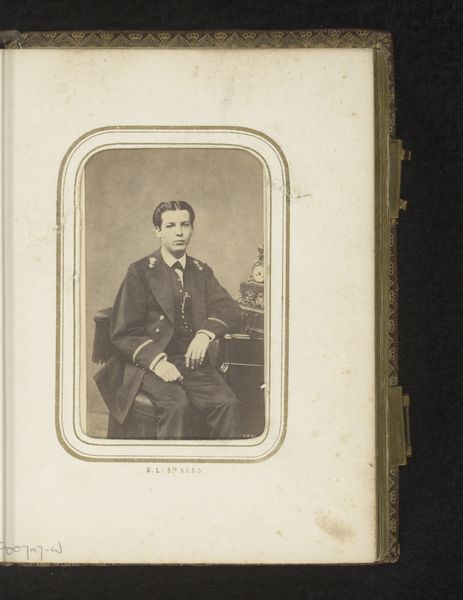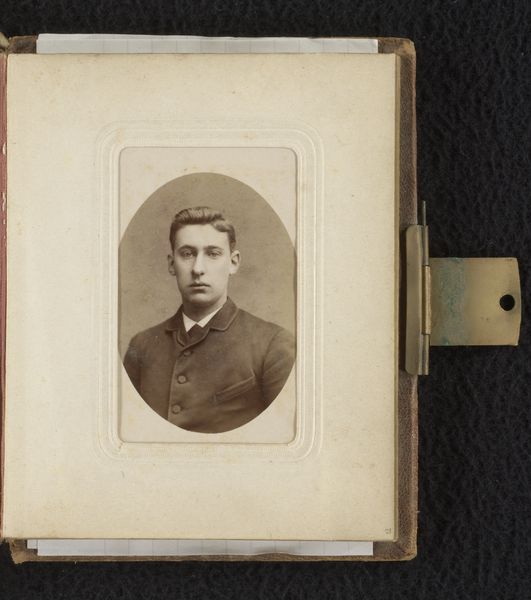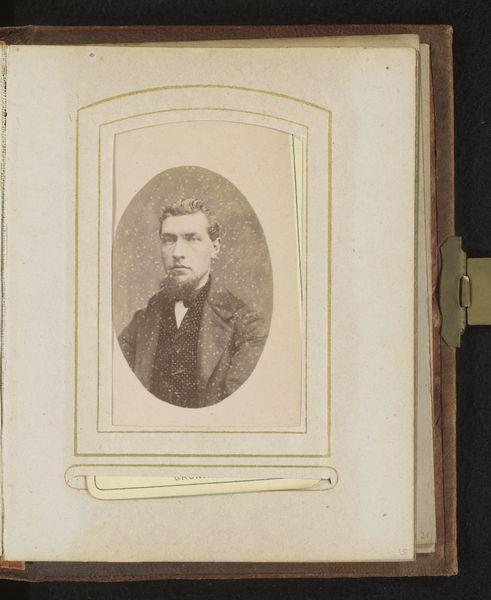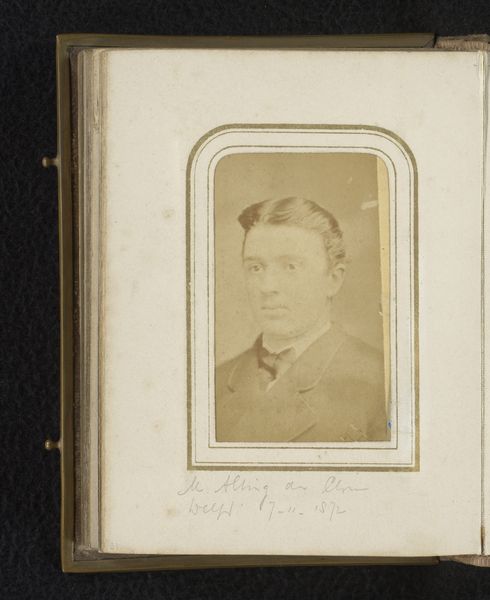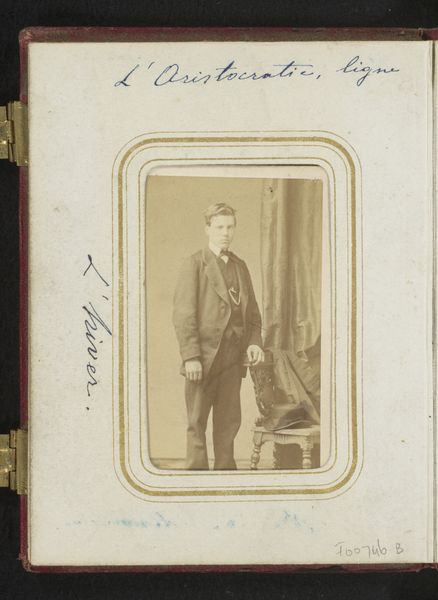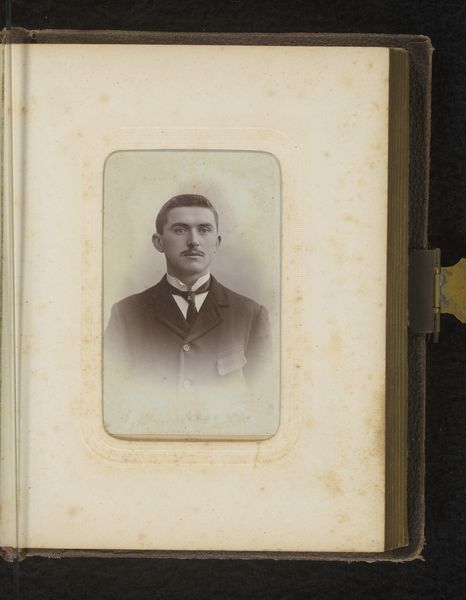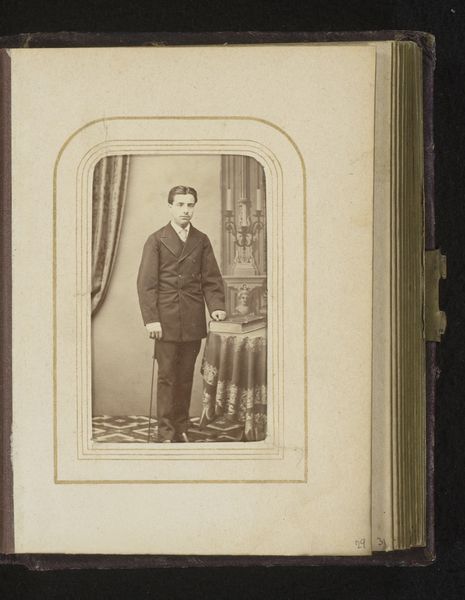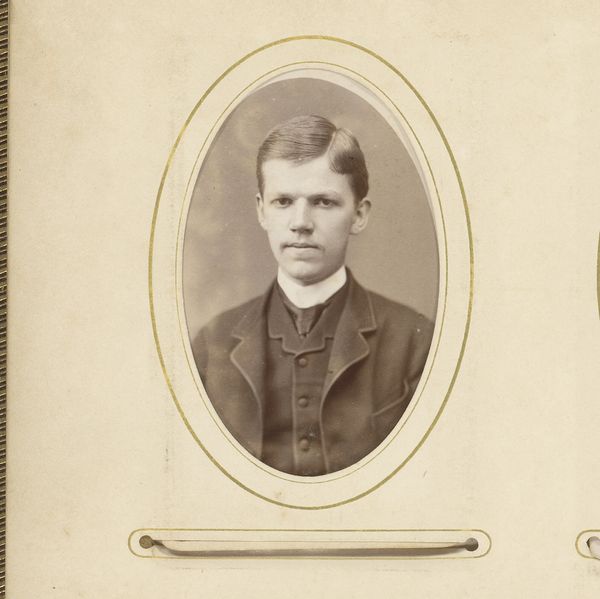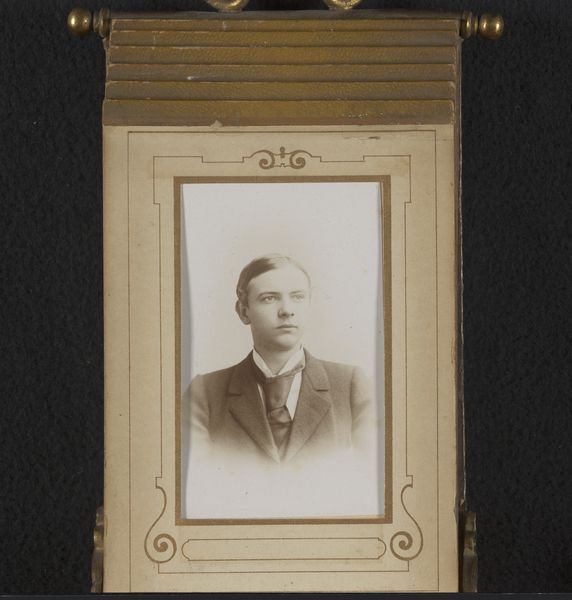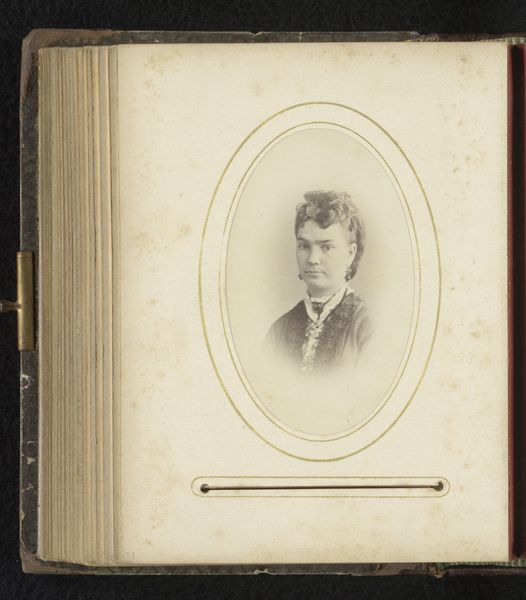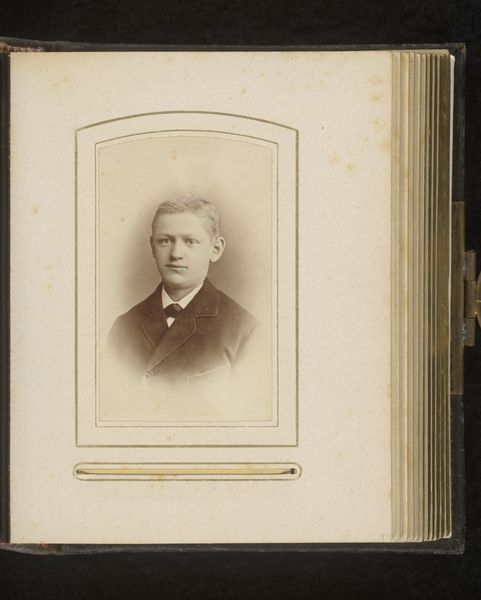
Dimensions: height 83 mm, width 52 mm
Copyright: Rijks Museum: Open Domain
Editor: Here we have Machiel Hendricus Laddé's "Portret van een jongen," created sometime between 1892 and 1906. It's a gelatin-silver print. I am immediately drawn to the tonal range – the way the grayscale seems to subtly model the young man's face and suit. What strikes you most about its composition? Curator: Note how the composition hinges upon a rigorous adherence to established conventions of portraiture. The symmetrical arrangement, the subject's direct gaze, the framing provided by the containing album - all reinforce a sense of decorum and studied formality. Consider, too, how the limited tonal palette underscores the photograph’s constructed nature; the picture is not simply capturing reality but aestheticizing it. How does this aesthetic choice contribute to the work’s overall meaning? Editor: It seems to remove the boy from time, giving him a universal quality almost like a statue, I find it curious though the hints of colour. Would you say those choices remove some realism? Curator: Indeed, we must be discerning. These additions draw attention to the artifice inherent in photography. It is through the juxtaposition of the monochrome photographic base with hand-applied tints that the artwork gains a heightened level of self-awareness of materiality. A photograph acknowledges its manufactured reality. It's interesting to ponder the intentions behind this deliberate manipulation, isn’t it? Editor: Yes, absolutely. It highlights the photographer's intervention, not just documenting but also interpreting, the subject. I hadn't thought about that. Thanks for expanding my understanding! Curator: A pleasure. Remember to investigate materiality and construction when evaluating an artwork’s visual syntax.
Comments
No comments
Be the first to comment and join the conversation on the ultimate creative platform.
